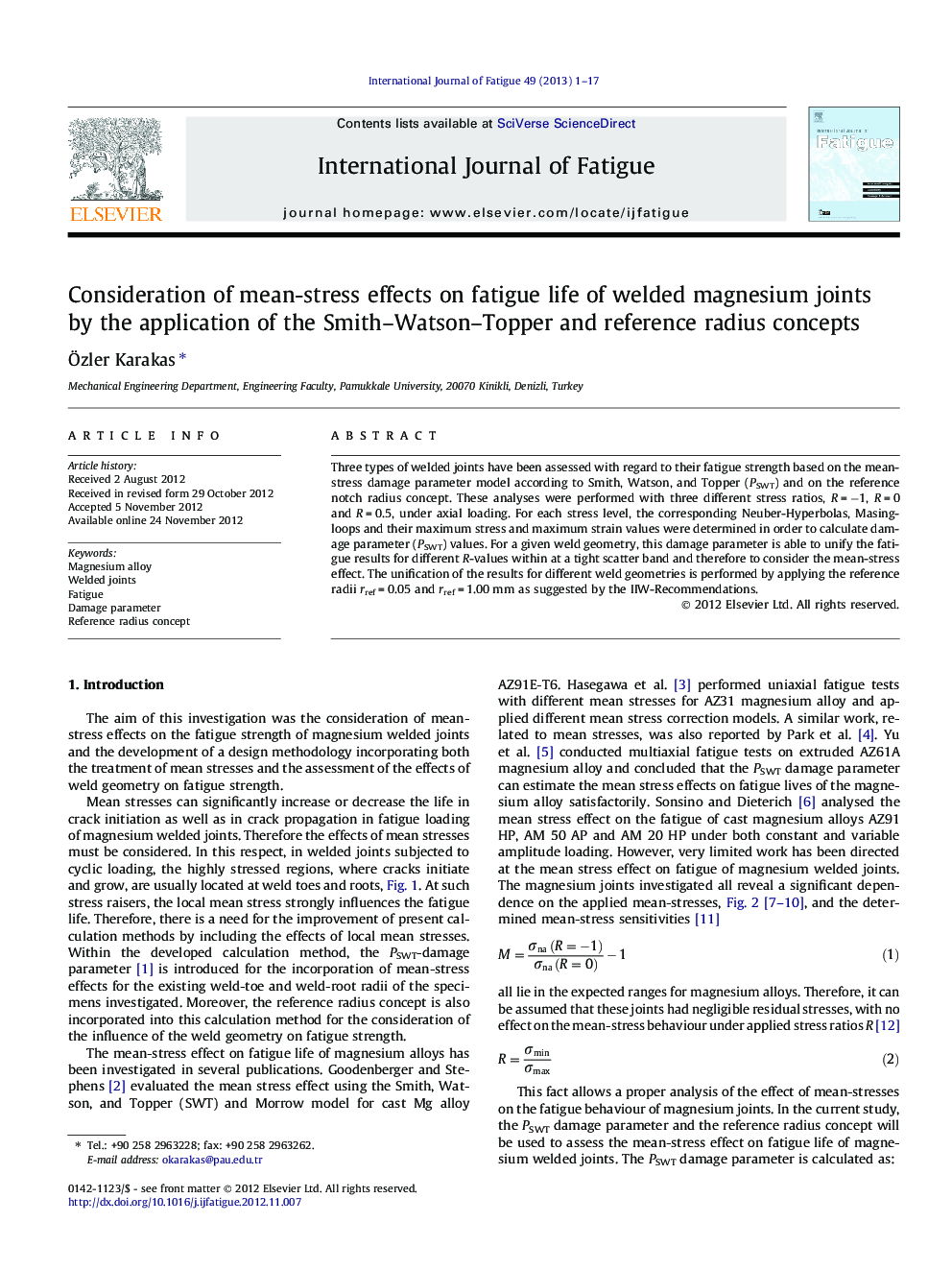| Article ID | Journal | Published Year | Pages | File Type |
|---|---|---|---|---|
| 777715 | International Journal of Fatigue | 2013 | 17 Pages |
Three types of welded joints have been assessed with regard to their fatigue strength based on the mean-stress damage parameter model according to Smith, Watson, and Topper (PSWT) and on the reference notch radius concept. These analyses were performed with three different stress ratios, R = −1, R = 0 and R = 0.5, under axial loading. For each stress level, the corresponding Neuber-Hyperbolas, Masing-loops and their maximum stress and maximum strain values were determined in order to calculate damage parameter (PSWT) values. For a given weld geometry, this damage parameter is able to unify the fatigue results for different R-values within at a tight scatter band and therefore to consider the mean-stress effect. The unification of the results for different weld geometries is performed by applying the reference radii rref = 0.05 and rref = 1.00 mm as suggested by the IIW-Recommendations.
► Three types of welded joints are assessed. ► The mean-stress damage parameter model and reference notch radius concept are employed. ► Both methods are able to evaluate the mean-stress effect. ► The uniform scatter was TP,SWT = 1:1.50. ► The slope k of PSWT–NR lines for rref = 1.00 mm is k = 3.0 as recommended by IIW.
